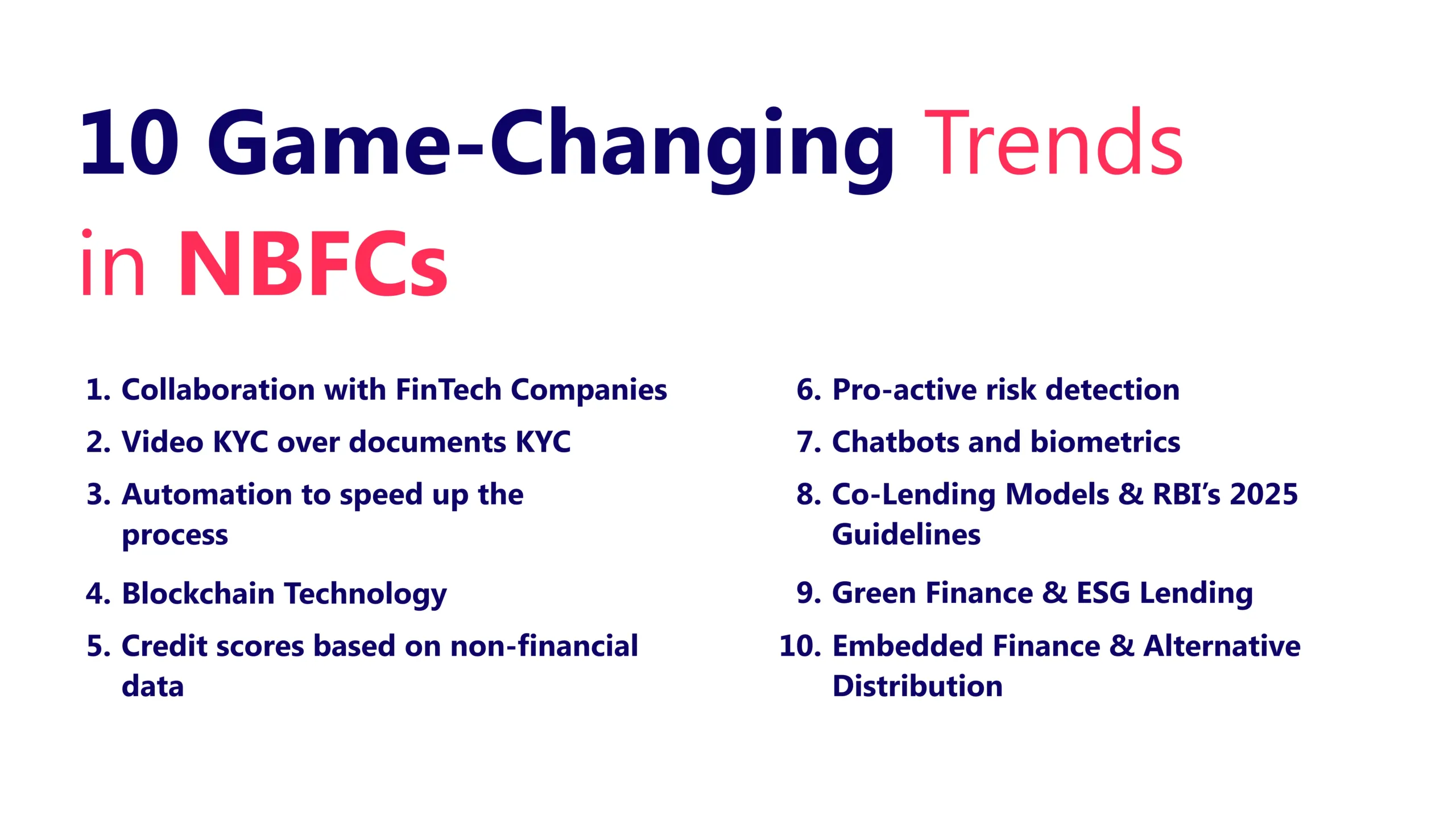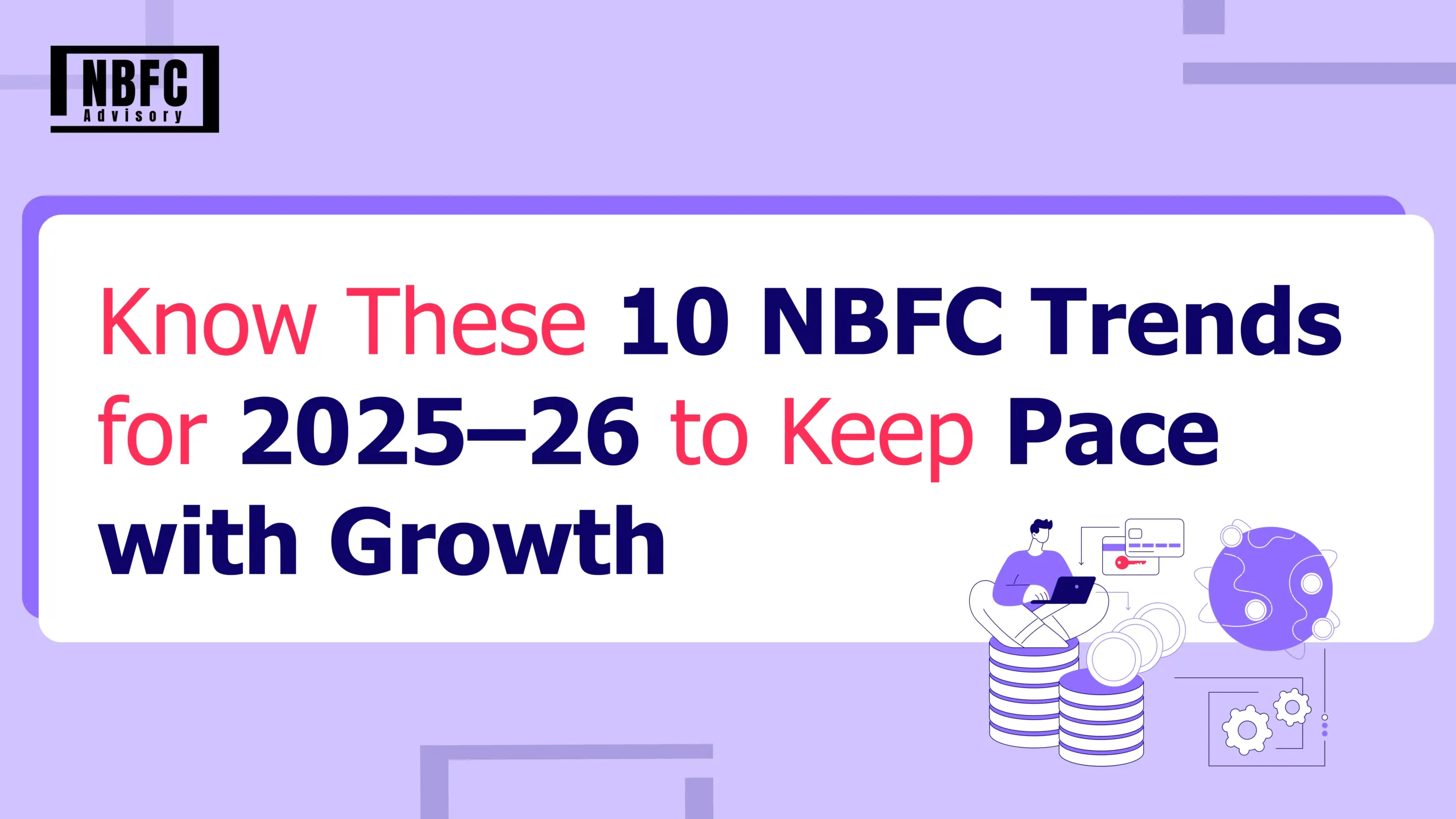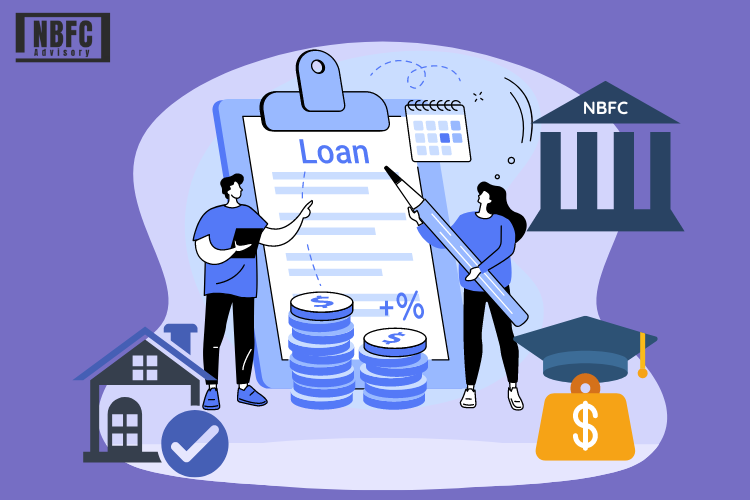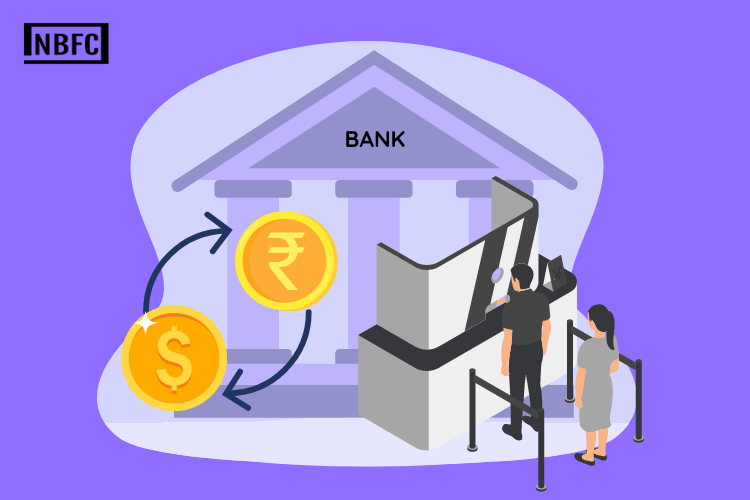Inside This Article
Trends in NBFCs are changing as fast as technology itself. Over the past few years, NBFCs have seen all-time high growth, outpacing traditional banks in many areas.
According to the RBI, NBFCs have become a much bigger part of India’s financial system over the last decade. Unlike scheduled commercial banks, NBFCs have carved their niche by being quicker to adapt, more flexible in lending, and sharper in meeting customer expectations.
As of FY 2024-25, credit growth in many segments of the banking system has moderated, with non-food bank credit growth around 10-11 %, but NBFCs and non-bank routes remain crucial players in the funding ecosystem. For example, corporate India raised nearly half of its funding in FY25 through non-banking channels. The Economic Times
Also, FinTech NBFCs alone sanctioned over 10.9 crore personal loans amounting to about ₹1,06,548 crore in FY 2024-25, underscoring how digital lending is continuing to deepen access to formal credit. The Economic Times
In this blog, we’ll break down the 10 game-changing NBFC trends that are shaping the industry in 2025-26 — and how your business can align with them.
Why NBFCs Are Growing Rapidly
NBFCs, i.e., Non-Banking Financial Companies, are thriving because of:
- A customer-centric business model
- Faster credit disposal mechanisms compared to banks
- A deep understanding of regional and sector-specific dynamics
- Technology-driven processes and data analytics
- Lower transaction costs that allow more competitive pricing
This blend of tech and customer-first thinking gives NBFCs a clear edge over traditional banks.
10 Game-Changing Trends in NBFCs

Let’s decode the latest trends that make NBFCs even more preferable than SCBs.
Collaboration with FinTech Companies
Online NBFC in India are collaborating with FinTech companies in a large number. Both the NBFCs and FinTech Companies are gaining from this collaboration.
Fintech companies can access credit easily and scale up, while NBFCs can increase their lending potential and footsteps in the market through existing assistance from established fintech brands.
Video KYC over documents KYC
The next trend in the NBFC sector is to replace KYC through documents with video KYC. Identity frauds still happen in large numbers even though various measures are in place.
Video KYC will be a great tool to prevent these frauds as there will be videos of customers showing their documents themselves.
Automation to speed up the process
When it comes to speeding up and scaling the lending process, automation comes as a great tool. Various procedures can be set up pre-defined through automation, and an SOP can be established. Thus, lesser operating costs and higher ROIs.
Blockchain Technology
The next big trend in NBFC is the use of blockchain technology. Through blockchain technology in NBFC, the customers’ data will not be centralized and can be accessible to the required party after obtaining consent.
Online NBFCs in India can use this data to broaden their customer base and make several services hyper-personalized per the target market and group.
Credit scores based on non-financial data
Digital payments have increased manifold in India. Online NBFCs in India can use the data of digital payments to gauge credit scores instead of traditional ones, which lack data.
Non-financial data sources such as mobile applications have been set up as revolutionary credit scoring models.
Pro-active risk detection
Because NBFCs highly utilize technology in their favor, it also has to upgrade their risk detection mechanisms and, thus, IT control. They must be proactive in risk detection rather than reactive to keep their data safe and secure.
Chatbots and biometrics
Innovation in NBFC has become a constant thing. NBFCs employ chatbots to make the enquiring and lending process for new customers interactive and accessible.
Another trend in NBFC is to use biometrics like iris patterns, fingerprints, retina, etc., to authenticate the customers. This highly reduces identity fraud.
Co-Lending Models & RBI’s 2025 Guidelines
The RBI recently issued the Co-Lending Arrangements Directions, 2025 (effective Jan 2026), which:
- Expands co-lending to all types of loans (not just priority sector)
- Mandates both partners retain at least 10% of each loan
- Requires greater disclosure and transparency
For NBFCs, co-lending means access to low-cost funds (via banks) while sharing risk and scaling reach. (RBI Guidelines Source)
Green Finance & ESG Lending
With rising demand for sustainability, NBFCs are moving towards green finance — loans for EVs, renewable energy, and sustainable housing.
For instance, Ecofy is India’s first green-only NBFC, while players like Namdev Finvest and Vivriti Capital are financing solar and sustainable projects. (Ecofy)
ESG (Environmental, Social, Governance) compliance is also becoming critical, with regulators and investors demanding green portfolios.
Embedded Finance & Alternative Distribution
Embedded finance is the integration of financial services into non-financial platforms like e-commerce apps. For NBFCs, it means reaching customers where they already spend time — shopping apps, ride-hailing services, or marketplaces.
Example: BNPL (Buy Now Pay Later) services, powered by NBFCs, are now seamlessly built into online checkouts. (PwC Report)
How we can help!
NBFCs are showing excellent results in growth and customer satisfaction through technology-led services. But keeping pace with change requires expert insights and strategic planning.
At NBFC Advisory, with 15+ years of advisory experience, we guide NBFCs to:
- Understand market trends
- Adapt to RBI regulations
- Deploy tech-driven solutions
- Enhance ROI with sustainable growth strategies
Book a call today and ensure your NBFC never misses an opportunity.
FAQs
According to the RBI guidelines of NBFC, a Non-Banking Financial Company is a company registered under the Companies Act 1956. It engages in the business of loans and advances and acquires shares, debentures, or other marketable securities but cannot accept customer demand deposits. It also does not form a part of the payment and settlement system.
Fintech Companies are those companies that provide financial services to customers through the integration of technology. They use various software to make financial assistance easier, faster, and more efficient. They use advanced technology like machine learning, data science, blockchain, etc., to streamline their entire process.
The finance industry has become more transparent, efficient, faster, and secure because of the integration of blockchain and fintech. These made the finance-related processes streamlined, authentic, and programmable.
According to the current scenarios of NBFCs in India, NBFCs will capture more share in the Indian market. There is still a wide gap between credit demand and supply in India, and also, there is an increase in start-up culture which will grow the need for credit even more.
It is a model where banks and NBFCs jointly fund loans. NBFCs provide reach and agility, while banks contribute capital at lower costs. Together, they expand lending capacity and improve credit access for borrowers.
It refers to the financing of eco-friendly projects by NBFCs, such as electric vehicles, solar power, and renewable energy. The aim is to support sustainable growth and align with global climate goals.








